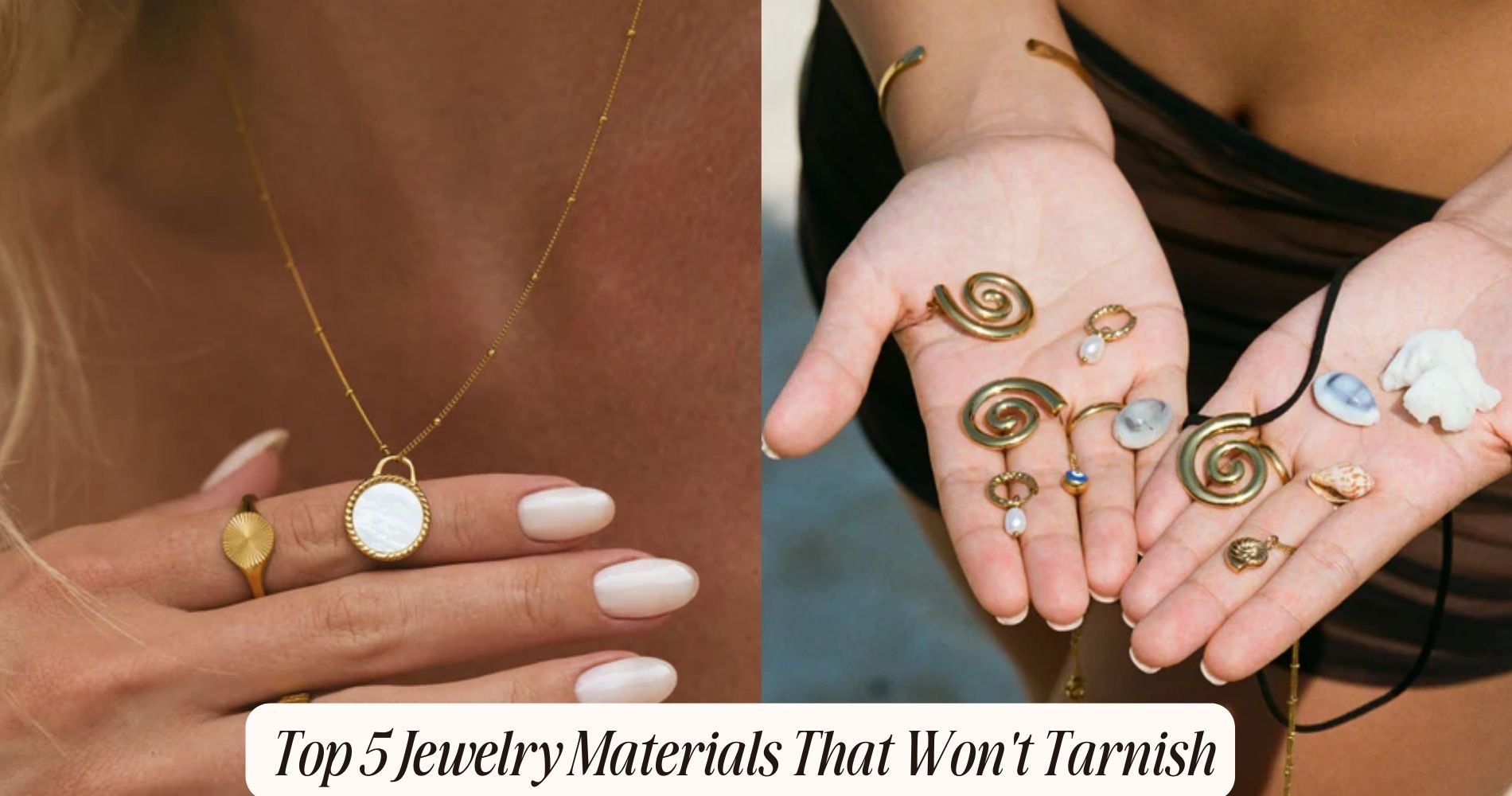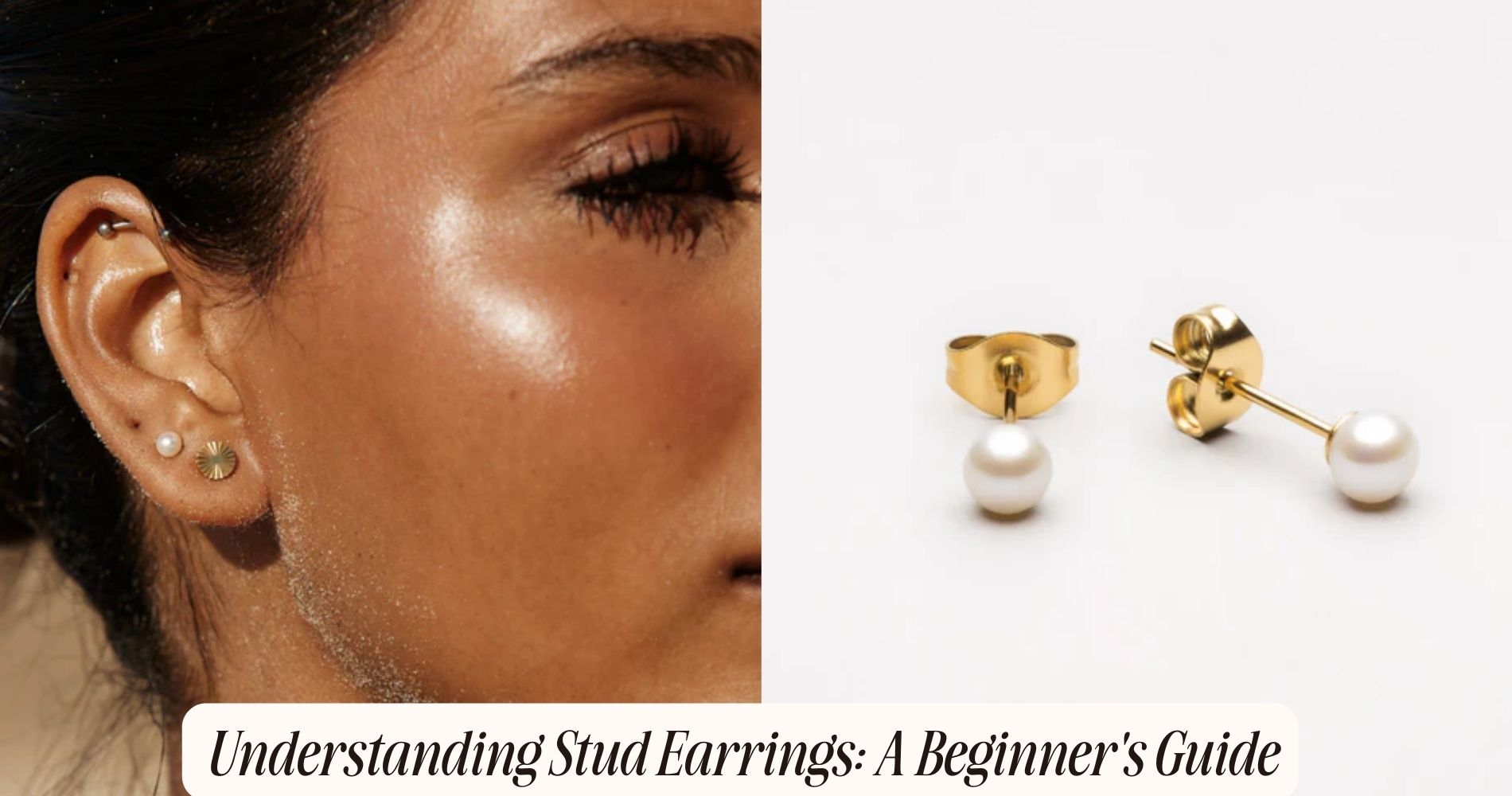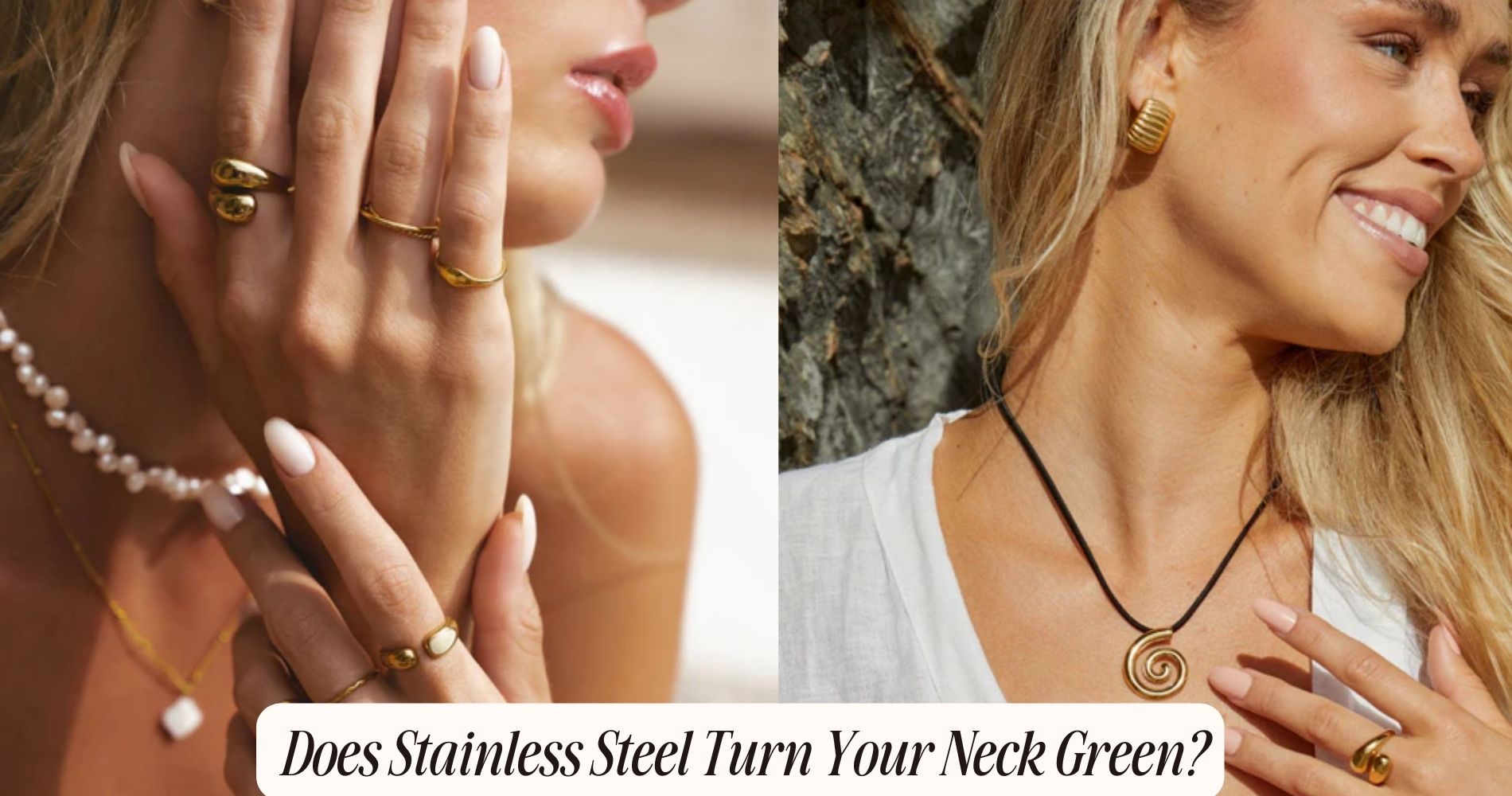
Top 5 Jewelry Materials That Won't Tarnish
Platinum
Platinum is a highly durable and dense metal that resists tarnish due to its inherent chemical stability. When choosing jewelry, particularly platinum rings, you benefit from a material that maintains its luster over time. Platinum's resistance to oxidation and corrosion guarantees that it won't tarnish, making it an excellent choice for long-lasting, high-quality pieces.
To maintain the pristine appearance of your platinum rings, you should follow proper platinum care guidelines. Regular cleaning using a mild soap and a soft-bristled brush will help remove any dirt or grime. Rinse with warm water and dry thoroughly with a soft cloth. Avoid exposing your platinum rings to harsh chemicals, such as chlorine or bleach, as these can cause damage, even to a metal as resilient as platinum.
Periodic professional checks are also advisable. A jeweler can polish and restore the ring's surface, addressing any minor scratches that might develop over time. By adhering to these platinum care practices, you'll make certain that your platinum rings retain their brilliance and integrity for years to come.
This approach leverages platinum's natural advantages, providing you with a timeless, tarnish-resistant piece of jewelry.
Stainless Steel
Like platinum, stainless steel offers outstanding resistance to tarnish, making it a popular choice for durable, low-maintenance jewelry. This material is composed primarily of iron, chromium, and nickel, which collectively create a corrosion-resistant alloy. The chromium content forms a passive layer of chromium oxide, guaranteeing prevention of oxidation and rust.
You'll appreciate stainless steel for its hypoallergenic properties, particularly if you have sensitive skin. Unlike some other metals, stainless steel is less likely to cause an allergic reaction, making it a safe and comfortable choice for everyday wear.
In terms of design, stainless steel is incredibly versatile. It can be polished to a high shine or given a matte finish, providing a wide range of stylistic options to suit your personal taste. This adaptability extends to the creation of intricate and modern designs, as stainless steel can be easily molded and engraved.
Additionally, stainless steel's durability ensures that your jewelry will withstand daily wear and tear. Its hardness makes it resistant to scratches and dents, maintaining its pristine appearance over time. With stainless steel, you're investing in jewelry that combines aesthetic flexibility with longevity and practicality.
Titanium
Titanium, renowned for its exceptional strength-to-weight ratio, offers a tarnish-resistant and hypoallergenic option for your jewelry collection. This metal's hypoallergenic properties make it an ideal choice for individuals with sensitive skin or metal allergies. Its chemical inertness guarantees that it won't react with your skin or the environment, thereby preventing any tarnishing or corrosion over time.
The lightweight durability of titanium is another significant advantage. Despite being incredibly strong—comparable to steel—it is remarkably light, making it comfortable for daily wear. This unique combination of robustness and minimal weight means you can enjoy enduring pieces that won't weigh you down. Additionally, titanium's resistance to scratches and dents ensures your jewelry maintains its pristine appearance, even after years of use.
Moreover, titanium's versatility allows for a wide range of finishes and designs. Whether you prefer a sleek, polished look or a more textured, matte finish, titanium can be crafted to suit your aesthetic preferences.
With all these benefits, incorporating titanium into your jewelry collection means investing in pieces that offer both style and longevity. There's no need to compromise between beauty and practicality when you choose titanium.
Gold (24K and 18K)
Gold, particularly in its 24K and 18K forms, offers a luxurious and tarnish-resistant option for high-quality jewelry. When you choose 24K gold, you're opting for the highest gold purity available, meaning it's 99.9% pure gold. This level of purity guarantees that your jewelry won't tarnish over time. However, 24K gold is relatively soft, making it more susceptible to scratches and dents.
On the other hand, 18K gold strikes a balance between purity and durability. Comprising 75% gold and 25% other metals like silver or copper, 18K gold maintains a high level of gold purity while being more robust than 24K gold. This makes it an excellent choice for everyday wear.
From an investment value perspective, both 24K and 18K gold are wise choices. The high gold purity in 24K pieces means they hold significant intrinsic value, making them a strong investment. While 18K gold contains less pure gold, its durability and aesthetic appeal still make it a valuable addition to your jewelry collection.
Tungsten Carbide
When you're looking for a durable and tarnish-resistant material for jewelry, tungsten carbide stands out due to its exceptional hardness and resistance to scratches. Unlike gold or silver, tungsten carbide is nearly impossible to scratch, making it ideal for pieces that will endure daily wear and tear. Its toughness is only surpassed by diamond on the Mohs scale, providing an excellent durability comparison.
Tungsten carbide's hypoallergenic properties also make it a suitable option for those with sensitive skin. You won't have to worry about allergic reactions or skin irritations, unlike with some other metals that contain nickel or other allergens. This is particularly beneficial if you have a history of metal allergies.
In addition to its practical benefits, tungsten carbide maintains a lustrous polish that doesn't fade over time. It's resistant to tarnish, ensuring that your jewelry remains as stunning as the day you bought it.
When selecting a material that balances aesthetics with functionality, tungsten carbide is a top contender. Its combination of unmatched durability and hypoallergenic properties guarantees it will stand the test of time, both in appearance and comfort.
Frequently Asked Questions
How Do I Clean and Maintain Tarnish-Resistant Jewelry Materials?
To clean and maintain tarnish-resistant jewelry, use a soft cloth and mild soap. Proper storage in a dry, cool place is essential. Adjust your cleaning frequency based on wear, but generally clean monthly to maintain luster.
Are There Hypoallergenic Options Among Tarnish-Resistant Jewelry Materials?
Yes, you'll find hypoallergenic benefits in tarnish-resistant jewelry materials like titanium and surgical stainless steel. These materials offer excellent durability, ensuring you enjoy both comfort and long-lasting wear without irritation or tarnish.
Can Tarnish-Resistant Jewelry Materials Be Resized Easily?
You can resize tarnish-resistant jewelry, but resizing techniques vary by material. Some metals are easier to resize, while others may incur higher resizing costs due to their hardness or specific properties. Consult a professional jeweler.
What Are the Environmental Impacts of Mining or Producing Tarnish-Resistant Jewelry Materials?
You need to take into account the environmental impacts of mining or producing tarnish-resistant jewelry materials. Ethical sourcing and recycling practices reduce harm, but extraction often leads to habitat destruction, water pollution, and significant carbon emissions.
How Do the Costs of Tarnish-Resistant Materials Compare to Traditional Jewelry Materials?
When comparing costs, tarnish-resistant materials often have higher upfront prices than traditional ones. However, their durability offers better investment value, reducing long-term expenses on maintenance and replacements. This cost comparison highlights their financial efficiency.
Conclusion
In selecting jewelry materials, you've got excellent options that won't tarnish. Platinum offers unmatched durability and luster.
Stainless steel provides a cost-effective, resilient choice. Titanium delivers lightweight strength that's hypoallergenic.
Gold, particularly in 24K and 18K forms, guarantees lasting brilliance. Tungsten carbide stands out with its extreme hardness and scratch resistance.
By opting for any of these materials, you safeguard your jewelry remains pristine and enduring, combining both aesthetics and functionality effortlessly.























Leave a comment
This site is protected by hCaptcha and the hCaptcha Privacy Policy and Terms of Service apply.